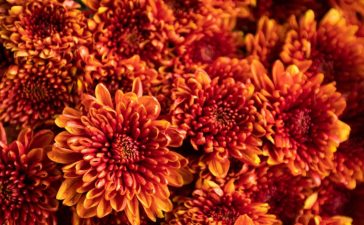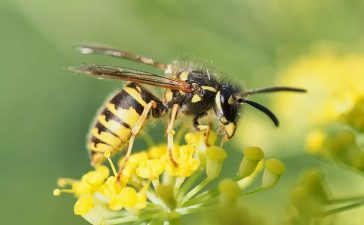While summer is often seen as the peak season for gardening and lawn care, it’s important to remember that each season plays a crucial role. Fall, in particular, brings its own set of tasks and opportunities for maintaining a healthy lawn. As the tree leaves dry and change color, it becomes essential to address front and back yard care to prepare for the upcoming winter. Whether it involves raking the yard or applying nutrient-rich grass feed, there are several straightforward and effective steps you can take to ensure your lawn thrives when spring arrives. To help guide you, we’ve consulted lawn care experts to highlight the essential fall lawn care measures that will transform your yard into a vibrant sea of green in the coming spring. Here’s what they recommend.
Fall Lawn Care Steps
Clear Out Weeds and Dead Plants
Start your fall lawn care regimen by clearing out any weeds and dead plants from your yard. Weeds can compete with your grass for nutrients, water, and sunlight, so it’s crucial to remove them to maintain a healthy lawn. Additionally, dead or decaying plants can harbor diseases and pests that may harm your grass.
To tackle this task, use a garden fork or a weeder tool to uproot weeds. Be sure to remove the entire weed, including the roots, to prevent regrowth. For dead plants, gently pull them out, ensuring you get rid of all plant material.
By eliminating weeds and dead plants, you create a cleaner and healthier environment for your grass to thrive during the fall and into the next growing season.
Water Well
“In the fall, your lawn is in recovery and preparation mode, so it requires ample water,” advises Yamaguchi. Often, summer droughts and water restrictions can leave your lawn parched during the hotter months, making fall the perfect opportunity to remedy this. Additionally, as you prepare your lawn for its winter dormancy, it’s crucial that it remains healthy to flourish come springtime. Target approximately one inch of water per week, adjusting based on rainfall levels. Once freezing temperatures set in, it’s important to cease all watering to prevent damage from freezing.”
Remove Flammable Plants
Summer may be synonymous with wildfires, but it’s crucial to be aware that fall can pose a fire hazard as well. Certain beloved plants contain highly flammable natural oils. “Cypress trees, juniper, rosemary, eucalyptus, and arborvitae are some common ones,” Yamaguchi notes. If wildfires are a genuine concern in your area, autumn is the time to contemplate removing these plants from your yard to mitigate fire risks. Additionally, it’s an opportune moment to secure fire insurance if you haven’t already.
Apply a Nutritious Fertilizer
As winter approaches, it’s essential to nourish both your front and back lawns. While grass growth above ground may decelerate, there’s still significant activity beneath the soil. Applying a balanced, slow-release fertilizer in early fall, while the ground is still soft and before the initial frost, is advisable. This strategy promotes deep root growth and nutrient storage in preparation for the winter. With this added boost, your grass stands a better chance of returning in the spring with enhanced health and vibrancy.
Plant Seeds, If Needed
If your lawn exhibits thin or barren areas, consider sowing seeds in late summer or fall, according to Yamaguchi. This timeframe offers favorable conditions, with warm weather persisting and nighttime temperatures remaining relatively mild. However, if the seeds fail to take root in the fall, don’t fret, as there will still be an opportunity to try again in the spring.
Rake Regularly
Raking your lawn regularly is essential, whether you’re dealing with leaves, pine needles, or fallen branches. Keeping the grass free from dense accumulations of natural debris is crucial for promoting grass growth and reducing slipping and fire hazards. While jumping into leaf piles can be enjoyable for people of all ages, substantial leaf piles can smother the grass, trap moisture, and create an ideal breeding ground for pests. To maintain a neat and clean appearance and ensure your lawn’s health, make regular raking a part of your routine.
Dethatch and Aerate
Dethatching and aerating your lawn are crucial steps in fall lawn care. Thatch, a combination of dead or broken grass, roots, and plant material, can accumulate if your lawn is frequently mowed but not properly raked or aerated. Fall provides an excellent opportunity to address these issues. Manual raking is effective, but power rakes can also be helpful. Dethatching allows water, nutrients, and air to reach the grassroots more efficiently, while aerating creates small holes in the soil, promoting better circulation of essential elements like nutrients, light, water, and air. While these tasks may require additional equipment or effort, they are worthwhile investments in your lawn’s health.
Mow the Grass Low
As the fall season progresses, consider giving your lawn a shorter trim. While you should avoid scalping the lawn, cutting the grass slightly shorter than during the warmer months is beneficial. A shorter grass length helps prevent matting and mold growth. As cooler weather sets in, grass growth typically slows down, resulting in less frequent mowing. When your grass stops growing altogether, it’s time to put away the lawnmower until spring.
You Might Also Like
A Comprehensive Guide to Caring for Your Fiddle Leaf Fig
The fiddle leaf fig has been a reigning star in the world of indoor plants for at least five years...
Expert Tips on Choosing and Caring for Indoor Trees
Do you have a corner in your home that's crying out for a touch of green? Indoor trees can be...
Radiant Mums: A Guide to Caring for Your Fall Chrysanthemums
Chrysanthemums, commonly known as mums, are cherished for their vibrant beauty and captivating sweet and spicy fragrance, making them a...
Expert Tips for DIY Yellow Jacket Traps
"If you've been dealing with unwanted guests in the form of pests near your home or garden, you might be...











